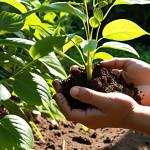Throughout history, humanity has grappled with the unknown, often turning to both the mystical and the methodical for answers. From ancient rituals seeking guidance from unseen forces to modern scientific inquiries probing the very fabric of reality, the quest for understanding remains a constant.
I’ve always been fascinated by how seemingly disparate fields like spiritual beliefs and empirical science can both offer unique perspectives on our existence.
It’s like having two sets of eyes, each seeing the world in a different, yet complementary way. We’ve seen a resurgence lately in interest in these topics, especially among younger generations searching for meaning in a complex world.
Even tech companies are starting to explore the intersection of consciousness and AI, which is pretty wild. I believe there’s potential for both harmony and conflict when these two worlds collide.
Let’s delve deeper into this fascinating juxtaposition in the article below. I’ll clarify the details for you.
Exploring Intuition: The Whispers of Our Inner Compass

I’ve always been fascinated by the power of intuition – that gut feeling, that inner voice guiding us when logic falls short. It’s like having a secret advisor living inside your head. For me, it’s shown up in unexpected ways, from avoiding a disastrous investment opportunity (thank goodness I listened to that nagging feeling!) to sensing when a friend was in need, even before they said a word. Think of it as a mental shortcut, honed by years of experience, picking up on subtle cues our conscious mind misses. It’s not magic; it’s pattern recognition on overdrive. I’ve even read studies showing how experienced traders often rely on intuition when markets get volatile. Of course, intuition isn’t infallible. It’s essential to balance it with critical thinking. But I believe that cultivating your intuition can be a powerful tool for navigating the complexities of life. It’s like having a sixth sense, adding a layer of understanding to our decision-making process.
Honing Your Intuitive Abilities
To amplify your innate intuition, it’s important to create space for it to surface. For me, this involves incorporating daily mindfulness and meditation practices into my routine. I start each morning with a 10-minute meditation session, focusing on quieting my mind and observing my thoughts without judgment. It’s surprising how much clearer things become when you eliminate the mental clutter. It’s like tuning a radio to find the clearest signal. Another technique I find helpful is journaling. I jot down my thoughts and feelings each evening, reflecting on the day’s events and paying attention to any intuitive nudges I might have experienced. It helps me connect with my inner self and recognize patterns in my intuitive responses. Think of it as training your mental muscle, building its ability to notice subtle cues and connections.
Distinguishing Intuition From Wishful Thinking
One of the biggest challenges I’ve faced in trusting my intuition is distinguishing it from wishful thinking or fear-based reactions. It’s easy to mistake a strong desire for a genuine intuitive insight. I’ve learned to ask myself tough questions, challenging my assumptions and biases. What evidence supports this feeling? Am I being influenced by my hopes or fears? Is this aligned with my core values? When I slow down and examine my motivations, I can usually discern whether I’m being guided by intuition or simply projecting my desires onto a situation. It’s kind of like being a detective, looking for clues and separating facts from fiction. I also find it helpful to seek feedback from trusted friends or mentors. They can often offer a more objective perspective and help me identify any blind spots in my reasoning.
The Science of Synchronicity: Meaningful Coincidences
Synchronicity – those eerie, meaningful coincidences that seem to defy explanation – has always intrigued me. It’s like the universe winking at you, hinting at a deeper connection between events. Think of meeting someone who shares your obscure hobby halfway across the world, or finding the perfect solution to a problem just when you need it most. When I was struggling with a career decision, I kept seeing the same symbol – an anchor – in different contexts: a painting in a café, a book title, even a random conversation. It felt like a sign, and ultimately, it led me to a career path that felt more grounded and fulfilling. Jung believed synchronicity was evidence of a collective unconscious, a shared reservoir of experiences and archetypes. While science can’t fully explain synchronicity, it suggests that our brains are constantly processing information, both consciously and unconsciously, and that we may be more attuned to subtle patterns than we realize. Whatever the explanation, I believe that paying attention to synchronistic events can enrich our lives and guide us toward unexpected opportunities. It’s like following breadcrumbs, leading us to hidden treasures.
Recognizing Synchronistic Patterns in Your Life
To become more aware of synchronicity, it’s essential to cultivate a sense of openness and curiosity. Start by paying attention to coincidences, synchronicities, or unusual patterns in your daily life. Don’t dismiss them as random chance; instead, ask yourself if they might have a deeper meaning or significance. For me, it helps to keep a journal dedicated to recording these events. I jot down the details of each coincidence, along with my thoughts and feelings about it. Over time, I’ve noticed recurring themes and patterns that offer valuable insights into my life’s path. I also find it helpful to engage in activities that promote mindfulness and awareness, such as meditation, yoga, or spending time in nature. These practices can quiet the mental chatter and allow me to be more receptive to subtle cues and connections. I found that reading books about mindfulness has really helped me on my journey.
The Intersection of Science and Synchronicity
While synchronicity may seem like a mystical concept, some scientists are exploring its potential connections to quantum physics and information theory. It’s mind-blowing, I know. The idea is that the universe is interconnected at a fundamental level, and that events may be linked in ways that defy classical physics. Some theories suggest that consciousness may play a role in shaping reality, and that our thoughts and intentions can influence the likelihood of certain events occurring. While this research is still in its early stages, it offers a fascinating glimpse into the potential scientific basis for synchronicity. It suggests that the universe may be far more mysterious and interconnected than we previously imagined. It’s like discovering a hidden code within the fabric of reality. I love how science and spirituality can sometimes converge, offering new perspectives on our existence.
Deciphering Dreams: Messages From the Subconscious
Dreams have always been a source of fascination for me. They’re like private movies playing in our minds, filled with bizarre characters, surreal landscapes, and cryptic messages. When I was going through a tough breakup, I kept having dreams about being lost in a forest, unable to find my way out. It was a clear reflection of my emotional state – feeling disoriented and unsure of my future. I started researching dream interpretation and discovered that forests often symbolize the unconscious mind. That dream was telling me that I needed to explore my inner world and find my own path to healing. It was like receiving a personalized map to my own emotional recovery. While dream interpretation is subjective and open to interpretation, I believe that paying attention to our dreams can provide valuable insights into our subconscious thoughts, fears, and desires. It’s like unlocking a secret language, revealing hidden aspects of ourselves.
Techniques for Remembering and Interpreting Dreams
To tap into the wisdom of your dreams, I suggest to start keeping a dream journal next to your bed. As soon as you wake up, jot down as many details as you can remember, even if they seem nonsensical. Pay attention to the emotions you felt in the dream, the colors, the symbols, and any recurring themes. It’s helpful to review your dream journal regularly, looking for patterns and connections. I also find it useful to use dream dictionaries or online resources to explore the potential meanings of specific symbols. However, remember that the most important interpretation is the one that resonates with you personally. Your dreams are unique to you and reflect your own experiences and beliefs. I remember one time I had a dream about a snake, and at first I thought it was a bad sign, but after some research I learned that snakes can also symbolize transformation and healing. It completely changed my perspective.
Lucid Dreaming: Becoming Conscious in Your Dreams
Lucid dreaming is a fascinating phenomenon where you become aware that you’re dreaming while you’re still in the dream. It’s like waking up inside a movie and realizing that you have the power to control the plot. I’ve had a few lucid dreams myself, and they’re incredibly empowering. You can fly, explore fantastical worlds, and even confront your fears in a safe and controlled environment. I once had a lucid dream where I was able to overcome my fear of public speaking by practicing giving a presentation to a room full of supportive friends. The experience boosted my confidence in real life. I learned about it through my friend, and she showed me different techniques. To induce lucid dreams, try performing reality checks throughout the day, such as asking yourself if you’re dreaming and looking for inconsistencies in your surroundings. You can also try techniques like dream incubation, where you focus on a specific intention before falling asleep. It’s a bit like programming your subconscious mind.
The Power of Ritual: Creating Meaningful Practices
Rituals – those symbolic actions we perform with intention – can be a powerful way to connect with our values, express our emotions, and create meaning in our lives. It’s like adding a layer of sacredness to everyday activities. It doesn’t have to be religious. I create rituals around my morning coffee, my bedtime routine, and even my work process. When I feel overwhelmed or stressed, I take a few minutes to light a candle, breathe deeply, and focus on my intentions. It’s a simple ritual, but it helps me to center myself and regain a sense of calm. I also have a ritual of gratitude that I practice every evening before bed. I think of three things that I’m grateful for and express my appreciation. It helps me to end the day on a positive note and cultivate a sense of contentment. I believe that creating meaningful rituals can transform our lives and help us to live with greater intention and purpose. It’s like weaving a tapestry of meaning into the fabric of our daily lives.
Designing Personalized Rituals for Well-Being
The key to creating effective rituals is to make them personal and meaningful. Start by identifying your values, goals, and intentions. What do you want to cultivate in your life? What emotions do you want to express? What connections do you want to strengthen? Once you have a clear sense of your intentions, you can design rituals that align with them. For example, if you want to cultivate more self-love, you could create a ritual of writing yourself a love letter each week. If you want to strengthen your connection to nature, you could create a ritual of spending time outdoors each day, observing the beauty of the natural world. If you want to express your gratitude, you could create a ritual of writing thank-you notes to people who have impacted your life. The possibilities are endless. Just make sure that your rituals are enjoyable, sustainable, and aligned with your values. It’s like creating a personalized recipe for well-being.
The Psychological Benefits of Rituals
Rituals can offer a range of psychological benefits, including reducing stress, promoting a sense of control, and enhancing social connection. When we perform rituals, we activate the parasympathetic nervous system, which helps to calm our minds and bodies. Rituals can also provide a sense of structure and predictability in a chaotic world. They give us something to look forward to, a sense of stability and control. Rituals are often performed in groups, which can strengthen social bonds and create a sense of community. Think of a wedding ceremony, or a family dinner, or a group meditation. These rituals bring people together, create shared experiences, and reinforce social norms. I’ve noticed that when I participate in rituals with my friends and family, I feel more connected to them and more supported. It’s like weaving a tapestry of shared experiences that strengthens our relationships.
The Art of Divination: Seeking Guidance From the Universe
Divination – the practice of seeking guidance from the universe through various tools and techniques – has been used for centuries by cultures around the world. When I was facing a difficult choice about whether to move to a new city, I consulted a tarot reader. I’d never done it before, but I was curious. The cards she drew resonated deeply with my situation, offering insights into my fears and potential challenges. It didn’t tell me what to do, but it gave me a different perspective to consider. I’ve also dabbled in astrology, exploring the influence of the planets on my personality and life events. Some people use pendulums, oracle cards, or even tea leaves to gain insights into their future. While divination is not a substitute for critical thinking and decision-making, I believe it can be a valuable tool for exploring our subconscious and gaining a broader perspective on our lives. It’s like consulting a map, providing us with potential routes and landmarks.
Ethical Considerations in Divination Practices
When engaging in divination, it’s essential to approach it with ethical awareness and responsibility. First and foremost, respect the tool you’re using and the guidance you’re seeking. Avoid using divination to manipulate or control others. Your friend was curious, so you did a reading for her. During your reading, you learned she would get a promotion. Your friend would be competing with a colleague for the same position, so she asked you to curse her colleague. You refused, because that goes against the ethical standards of divination. Divination should be used for personal growth and self-awareness, not to harm or interfere with the free will of others. Be mindful of your own biases and projections. It’s easy to interpret divination results in a way that confirms your existing beliefs or desires. Be open to unexpected messages and consider alternative interpretations. The most skilled practitioner knows their work should be taken with a grain of salt.
Integrating Intuition and Logic in Decision-Making
Ultimately, I believe that the most effective approach to decision-making involves integrating both intuition and logic. Don’t rely solely on one or the other. Use your intuition to explore possibilities, generate creative solutions, and identify potential risks and opportunities. Then, use your logic to analyze the facts, evaluate the evidence, and assess the potential consequences. One supplements the other. A balanced approach ensures that you’re considering all aspects of the situation and making informed choices that align with your values and goals. My sister was unsure if she should quit her job and find a new job. After thinking about it for awhile, she decided to seek help from a mentor she trusted. After considering advice from the mentor, along with her goals and desires, she ultimately chose to quit her job to pursue a new role that was more aligned with her goals.
Living a Life of Wonder: Embracing the Unknown
Ultimately, I believe that the key to living a fulfilling life is to embrace the unknown and cultivate a sense of wonder. Don’t be afraid to explore new ideas, challenge your assumptions, and step outside of your comfort zone. I remember when I first started traveling solo. I was terrified, but I knew that I needed to break free from my routine and experience the world in a new way. The experience was transformative. It taught me to trust myself, to adapt to new situations, and to appreciate the beauty of different cultures. I believe that by embracing the unknown, we open ourselves up to new possibilities, new experiences, and new connections. We become more resilient, more adaptable, and more alive. It’s like embarking on a great adventure, filled with unexpected twists, turns, and discoveries. The more we embrace the unknown, the more we expand our horizons and discover the true potential of our lives.
Cultivating Curiosity and Open-Mindedness
To cultivate a sense of wonder, I suggest to practice curiosity and open-mindedness. Approach the world with a beginner’s mind, willing to learn and discover new things. Ask questions, explore different perspectives, and challenge your own assumptions. Be open to new experiences, new cultures, and new ways of thinking. Read books, watch documentaries, attend lectures, and engage in conversations with people who have different viewpoints. The more you expose yourself to new ideas and perspectives, the more you expand your understanding of the world and the more you cultivate a sense of wonder. My uncle enjoyed hiking and was eager to learn more about the plants in the area. His curiosity and enthusiasm for nature continued to grow.
Finding Magic in the Mundane
You don’t have to travel to exotic locations or experience extraordinary events to find magic in the mundane. Look around you. Pay attention to the small details of everyday life. Observe the beauty of a sunset, the sound of the rain, the smile of a stranger. Find joy in simple pleasures, such as a cup of coffee, a walk in the park, or a conversation with a friend. Embrace the present moment and appreciate the gifts that it has to offer. The more you focus on the positive aspects of your life, the more you cultivate a sense of gratitude and contentment. I once found a heart-shaped stone on the beach, and it reminded me to appreciate the simple things in life. It’s like discovering hidden gems in the ordinary moments of our lives.
| Concept | Description | Example |
|---|---|---|
| Intuition | A gut feeling or inner knowing that guides decision-making. | Choosing a different route home and avoiding a traffic jam. |
| Synchronicity | Meaningful coincidences that seem to defy explanation. | Thinking of someone and then receiving a call from them. |
| Dream Interpretation | Analyzing dreams to gain insights into the subconscious. | Dreaming of flying and interpreting it as a desire for freedom. |
| Ritual | Symbolic actions performed with intention to create meaning. | Lighting a candle and meditating to create a sense of calm. |
| Divination | Seeking guidance from the universe through various tools. | Consulting a tarot reader for advice on a career decision. |
In Closing
Embarking on a journey of self-discovery through intuition, synchronicity, and dreams is a deeply personal and enriching experience. By embracing the unknown, cultivating wonder, and integrating both intuition and logic, we can unlock hidden potentials and create a life filled with meaning and purpose. Remember to trust your inner compass, be open to the whispers of the universe, and find magic in the mundane. Cheers to a life of wonder!
Helpful Tips to Keep in Mind
1. Practice mindfulness and meditation to quiet your mind and enhance your intuitive abilities.
2. Keep a journal to record synchronicities, dreams, and other meaningful coincidences.
3. Cultivate curiosity and open-mindedness to expand your understanding of the world.
4. Design personalized rituals that align with your values and intentions.
5. Integrate intuition and logic in decision-making to make informed choices.
Key Takeaways
Intuition: Trust your gut feeling and inner knowing to guide you when logic falls short.
Synchronicity: Pay attention to meaningful coincidences and synchronicities in your life.
Dream Interpretation: Explore the potential meanings of your dreams to gain insights into your subconscious.
Rituals: Create symbolic actions that connect you with your values and create meaning.
Embrace the Unknown: Cultivate a sense of wonder and be open to new experiences.
Frequently Asked Questions (FAQ) 📖
Q: What are some practical examples of how spiritual beliefs and empirical science might complement each other?
A: Well, think about mindfulness. Spiritual traditions have used meditation for centuries to cultivate inner peace and self-awareness. Now, neuroscience is starting to show how mindfulness practices can actually change the structure and function of the brain, reducing stress and improving focus.
Or consider the placebo effect – you know, when someone gets better just because they believe they’re getting treatment, even if it’s a sugar pill. Science is still figuring out exactly how it works, but it shows the powerful connection between mind and body, something spiritual traditions have always emphasized.
It’s like science is providing the “how” while spirituality offers insights into the “why.”
Q: With the rise of
A: I and technology, do you foresee a growing conflict or a greater harmony between science and spirituality in the future? A2: Honestly, I think it could go either way, and it probably will be a bit of both.
The thing about AI is that it’s pushing us to ask really fundamental questions about what it means to be human – like, what is consciousness? What is creativity?
These are questions that spiritual traditions have been grappling with for millennia. On the one hand, AI could potentially automate away a lot of the drudgery of life, freeing us up to pursue more meaningful, spiritual pursuits.
On the other hand, if AI becomes too powerful and detached from human values, it could lead to a really dehumanizing and even dystopian future. It really depends on how we choose to develop and use this technology.
It’s kinda like fire – it can warm your house, or burn it down.
Q: If someone wants to explore this intersection of science and spirituality, where should they start? What resources or fields of study would you recommend?
A: That’s a great question! I’d say start with what you’re naturally curious about. If you’re into psychology, maybe look into transpersonal psychology or the study of altered states of consciousness.
If you’re more interested in physics, check out quantum physics and its interpretations of reality. There are some amazing books out there, like “Entangled Minds” by Dean Radin, which explores the scientific evidence for psychic phenomena.
Or check out the work of people like Sam Harris, who tries to bridge the gap between science and spirituality from a rationalist perspective. Honestly, though, the best way to learn is just to be open-minded, ask questions, and explore different perspectives.
There’s no one “right” answer, and the journey of discovery is often the most rewarding part. Just remember to keep a healthy dose of skepticism and critical thinking along the way.
📚 References
Wikipedia Encyclopedia
구글 검색 결과
구글 검색 결과
구글 검색 결과
구글 검색 결과
구글 검색 결과




